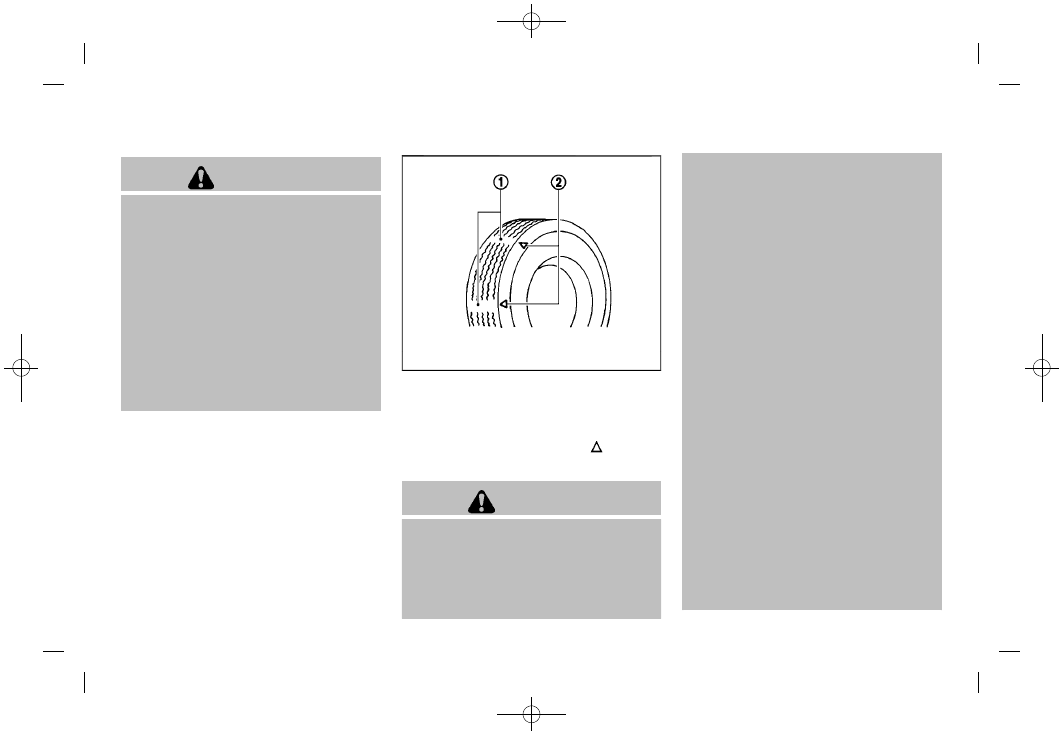Nissan 370Z Roadster (2017 year). Instruction - part 25

(386,1)
[ Edit: 2016/ 2/ 22
Model: 2017MY NISSAN 370Z(Z34) OM17E00Z34U0 ]
8-34
Do-it-yourself
WARNING
.
Retighten the wheel nuts
when the vehicle has been
driven for 600 miles (1,000
km) (also in cases of a flat tire,
etc.).
.
For additional information re-
garding tires, refer to “Impor-
tant Tire Safety Information”
(US) or “Tire Safety Informa-
tion” (Canada) in the Warranty
Information Booklet.
SDI1663
Tire wear and damage
*
1
Wear indicator
*
2
Wear indicator location marks. The
locations are shown by “
”, “TWI”,
etc. depending on tire types.
WARNING
.
Tires should be periodically
inspected for wear, cracking,
bulging or objects caught in
the tread. If excessive wear,
cracks, bulging or deep cuts
are found, the tire(s) should be
replaced.
.
The original tires have built-in
tread wear indicators. When
wear indicators are visible,
the tire(s) should be replaced.
.
Tires degrade with age and
use. Have tires, including the
s p a r e , o v e r 6 y e a r s o l d
checked by a qualified techni-
cian, because some tire da-
mage may not be obvious.
Replace the tires as necessary
to prevent tire failure and
possible personal injury.
.
Improper service of the spare
tire may result in serious per-
sonal injury. If it is necessary
to repair the spare tire, it is
recommended you visit a
NISSAN dealer for this service.
.
For additional information re-
garding tires, refer to “Impor-
tant Tire Safety Information”
Condition: